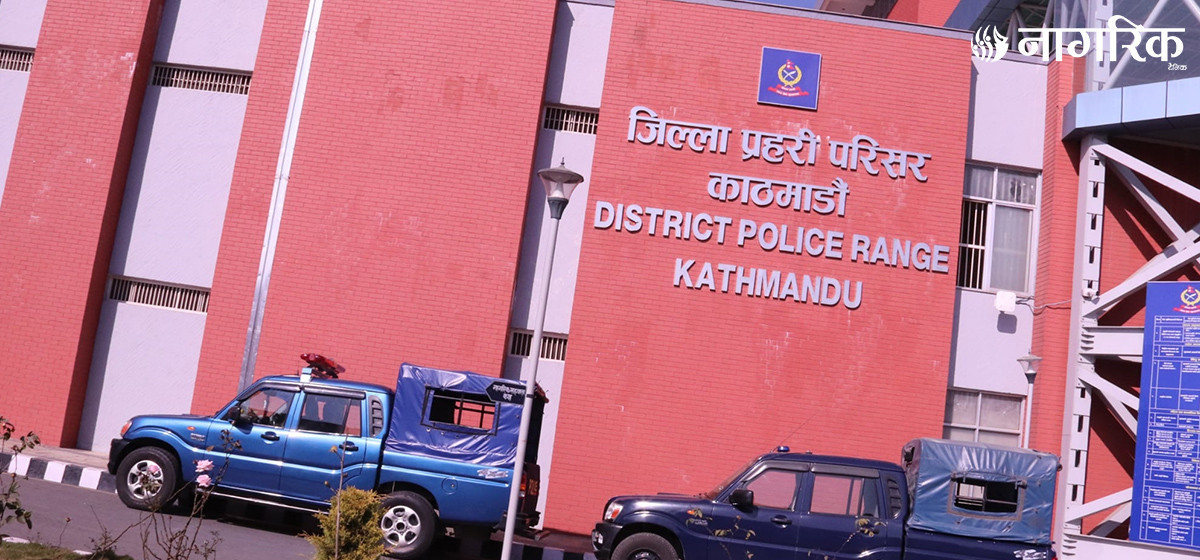Parents accuse local government of merging government schools providing undue benefit to private ones
KATHMANDU, Aug 17: Controversy has arisen after the Godavari municipality in Kailali merged several basic schools within its jurisdiction. The dispute intensified after the municipality decided last February to place the ward office in the building of one of the merged schools before the schools were officially merged.
In the current academic year, the municipality merged Shankar Basic School, located in ward 10, with Ghanteshwar Basic School, which is three kilometers away. Similarly, Shiva Basic School in ward 12 was merged with Kailash Basic School, also three kilometers away.
Students were enrolled in both the merged schools, and the physical infrastructure was adequate. The schools also had teachers in place. Despite these resources, the municipality forcibly annexed the schools, prompting Shiva Raj Bhatta, the former chairman of Shankar Basic School Management Committee, to file a case against the decision in the Supreme Court (SC).
He said that the municipality's decision to set up a ward office in the school last year was wrong, and their subsequent decision to merge the school despite the presence of students forced them to seek justice from the SC. The apex court has since issued an interim order in this case.
"Our school was built through the hard work of the community. For the current academic session, we have enrolled 96 students up to class 5," Bhatta said. "Unfortunately, in March 2024, the municipality allocated Rs 3.8 million from the provincial government to build a ward office in our school. It was later discovered that the municipality decided to merge the two schools on 14 May, 2024, after planning to establish a ward office in the school."
The municipality had decided to establish a ward office in Shankar Basic School and Shiva Basic School on March 13, 2024, and subsequently announced the merger.
“Realizing the municipality's mala fide intentions, we formed a struggle committee and knocked on the SC’s doors to save the school," added Bhatt, who is also a member of the struggle committee. "The Supreme Court has issued an interim order in the case, making it clear that the municipality had wrongful intentions in forcibly merging the schools."
Community schools outshine private ones in Rolpa

Bhatta expressed his frustration, saying that the municipality has done an injustice to the community by merging the well-equipped school with a distant one.
“We cannot tolerate this," said Bhatta.
He accused the municipality of disrupting the school environment, alleging that their actions have led to a decrease in students attending government schools and an increase in those enrolling in private schools.
The school's principal, Bhakta Bahadur Rawal, also criticized the municipality, stating that merging of schools was unfair to the students who were already enrolled in the schools.
"Students from nearby private schools had also enrolled in our school. But after the municipality decided to establish a ward office, even the enrolled students stopped coming," Rawal said.
"The municipality asked us for the data on student attendance, and we provided the information of 56 students. Despite their enrollment, the municipality still merged the school," he said, adding, "It is clear that the intention to merge the schools after deciding to create a ward office was wrong."
Khem Saud, the founder of Shiva Basic School, expressed his concern over the municipality's decision to merge Shiva Basic School with Kailash Basic School in ward 11. In the current academic session, 58 students were enrolled in classes 1 to 5, and there were 23 students in the early childhood class.
"Although we had students enrolled, the municipality merged our school to establish a ward office in the school building," Saud said. "As education advocates, we have filed a case against the municipality's decision in the Dipayal High Court, and the court has issued an interim order. The municipality's action has benefitted the private schools."
Similarly, in Neelkantha Municipality-3, which serves as the headquarters of Dhading, three secondary schools—Neelkanth Secondary School, Bal Mandir Secondary School, and Ijara Basic School—have been merged to form Neelkanth Bal Mandir Secondary School.
Locals complained that this merger was driven by political motives rather than the lack of students. Parents accuse the local government of undermining public schools to benefit private institutions, noting that half a dozen private schools are operating in the same ward.
The Bal Mandir School, one of the district's best schools with education up to class 12, had over a thousand students. Neelkanth Secondary School, another well-regarded school offering education up to class 12, had around 3,000 students. Parents eagerly sought admission to Neelkanth Secondary School due to its good reputation in the district. However, the municipality's decision to merge the schools instead of expanding them to meet growing demand has angered teachers, parents, and even the ward chairman.
Ward Chairman Rajkumar Shrestha expressed his frustration, noting that while there were fewer students in Ijara and the merger there didn't cause much reaction, the merging of Bal Mandir and Neelkanth Secondary School—two reputed schools providing quality education—deeply hurt the parents. He accused the municipality of prioritizing private schools by merging government ones. Shrestha also mentioned that he had studied at Neelkanth Secondary School himself.
"The municipality suddenly merged Bal Mandir School, which is spread over four ropanis of land and has more than a thousand students, without any discussion with stakeholders," said Shrestha. "In our ward, there were three government and seven private schools. When the three government schools were merged into one, students began to opt for private schools, fearing they wouldn't be able to secure admission in the merged school. The focus should be on improving the educational quality of government schools, not merging them."
He added that, despite his personal reservations, he is obligated to follow the municipality's decision since he is part of the local government.
Deepak Adhikari, who has two children attending Bal Mandir Secondary School, criticized the municipality for creating frustration by merging schools without considering the needs of the students. "My two children were studying in kindergarten. When the municipality announced the decision to merge the schools without consulting stakeholders, it felt like the rug was pulled out from under us," said Adhikari, who is also the chairman of the teacher-parent committee. He pointed out that only the guidelines for merging schools within 500 meters should apply to kindergartens, but the municipality merged them regardless of the distance.
Adhikari further said that the municipality merged the Bal Mandir School with Neelkanth School under the pretext of making it a larger school, which he believes is wrong. Despite the local government merging the three schools, the district education coordination unit continues to communicate separately.
These examples highlight the growing trend of municipalities merging schools based on arbitrary decisions. The government has adopted a policy of merging schools to prioritize students when enrollment numbers are very low, but this policy has not been consistently followed. Since the full authority of school education management has shifted to local governments, there seems to be a greater focus on merging schools rather than improving the quality of community education.
According to Deepak Sharma, director general of the Center for Education and Human Resource Development (CEHRD), 1,230 schools have been merged across the country since 2074. Sharma said that municipalities have the right to merge schools in the interest of students, and the central government has implemented the policy to efficiently utilize resources in schools with fewer students. He emphasized that local governments should adhere to this policy.
Birendra Bhatta, the head of Godavari Municipality in Kailali, said that the municipality decided to merge 11 schools in the current academic session after assessment. Mayor Bhatta said that the municipality followed the procedures in line with the Education Act and targeted schools with fewer than 75 students in primary and fewer than 80 students in secondary schools for the merger.
In the current academic session, four schools with more teachers but fewer students were merged. "The mergers were carried out to improve the educational quality of public schools and make better use of resources," Bhatta said. "Although the government's policy is to merge schools with fewer than 100 students, we have set the threshold at 75 and 80."
Bhatt said that 11 schools were scheduled for merger, but seven were spared as they managed to increase student enrollment. He said that the mergers were conducted after discussions with the concerned parties and dismissed the allegation that the mergers were done to establish ward offices in school buildings as false.
"The goal of the municipality is to maintain educational quality, and we will not back down from this commitment," Bhatta asserted.







































